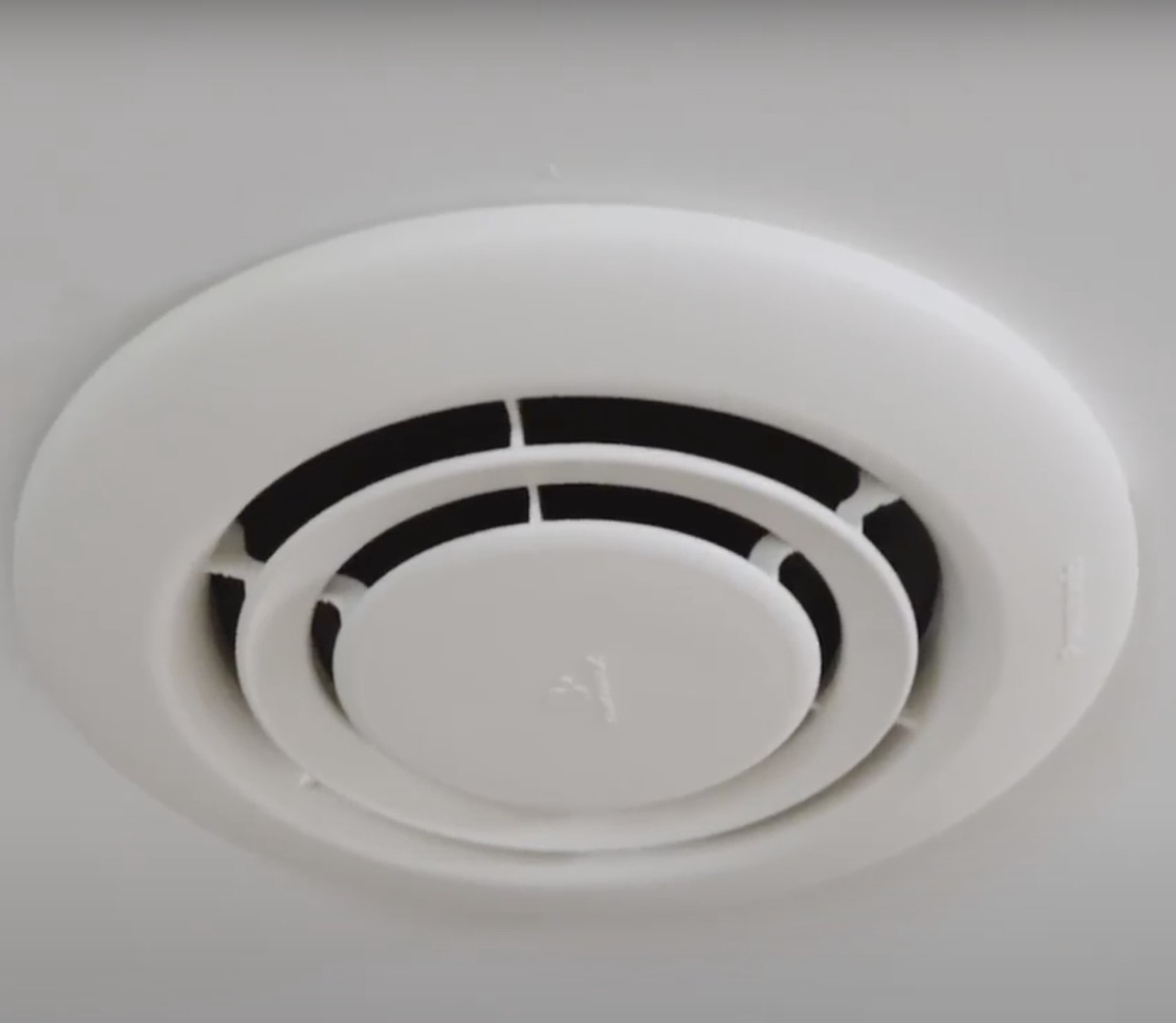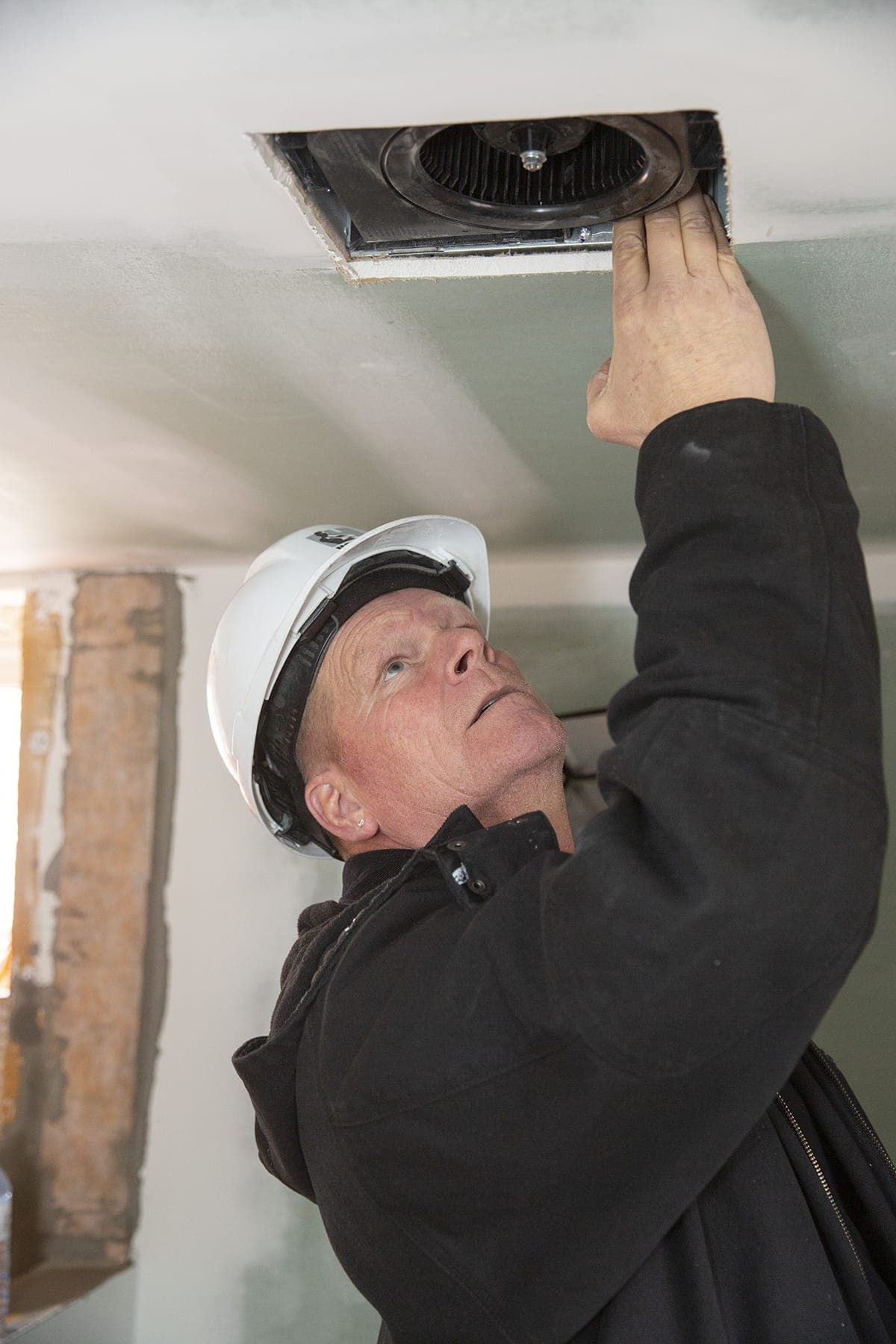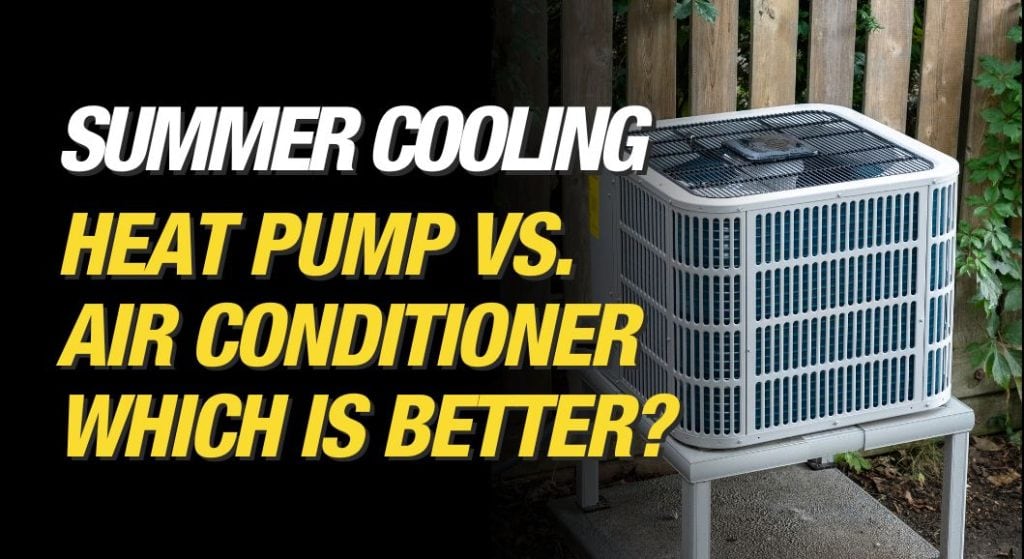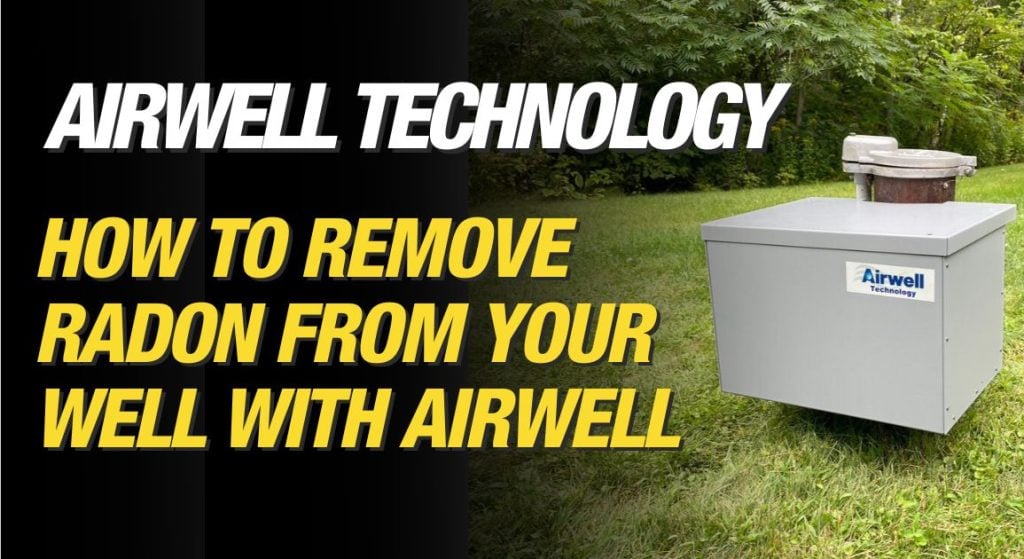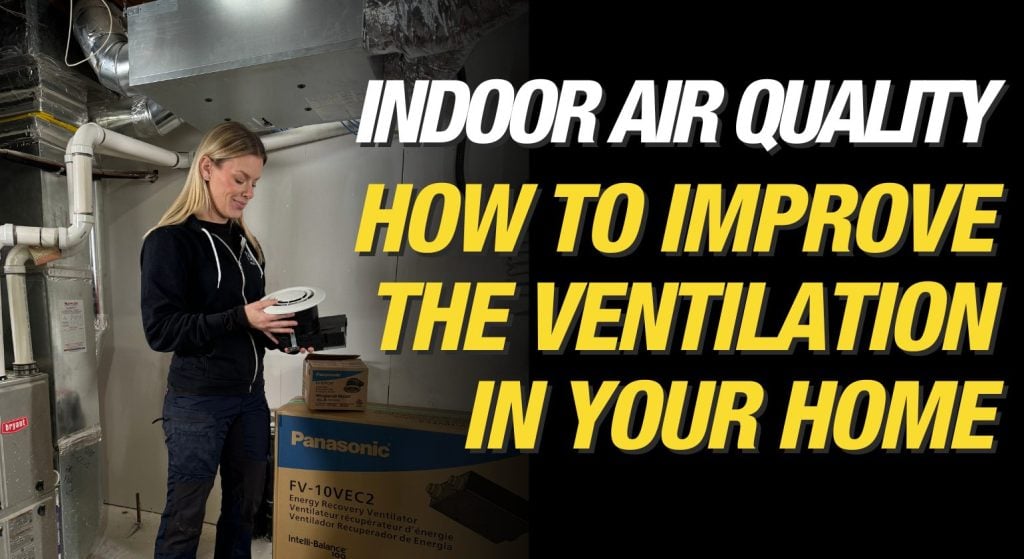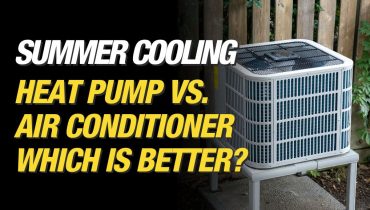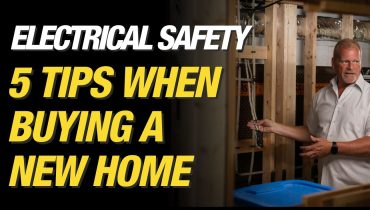Heat Pump vs Conventional AC (Air Conditioner): Which is Better for Cooling? Summer is here and it’s bringing the heat. But I can’t complain because I love the summer weather,...
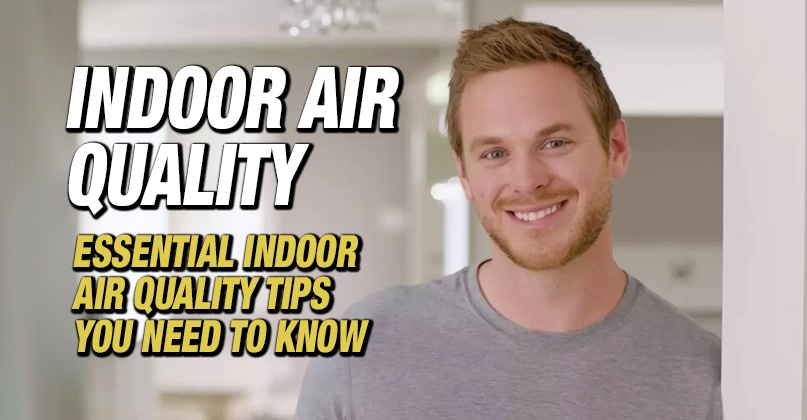
Essential Tips To Improve Indoor Air Quality In Your Home
By Mike Holmes Jr
Mike’s Advice / Home Safety & Maintenance
Thursday, April 16th, 2020 @ 10:04am
How Can You Improve Your Indoor Air Quality?
Did you know that the air inside your home can be 2-5x more polluted than the outdoors? This is why indoor air quality needs to be top of mind when thinking about your home. From volatile organic compounds (VOCs), radon, mold, formaldehyde, and more, there is a lot to think about when considering a healthy indoor air quality in your home. It can have a significant impact on your health. Here are some indoor pollutants that contribute to indoor air quality problems and how to improve them.
Why Is My Air Quality Bad?
There are many causes of indoor air pollution. To put it simply, sources that release gases or particles into the air are usually the cause of indoor air quality problems. Other sources can be building materials and the outdoor air.
Here are some of them:
- Mold
- Radon Gas
- VOCs
- Dust Mites
- Carbon Monoxide
Poor indoor air quality has been linked to asthma, fatigue, and even lung cancer. Here is a full article on the sources of air pollution in your house.

Did you know your indoor air could be 5 times more polluted than the outside air?
How To Fix Bad Air Quality
Here are some things you can do to improve the air quality in your home.
- Test for radon gas. Here is a guide to radon test kits.
- Use your kitchen and bathroom ventilation systems.
- Check for mold
- Control humidity in your home.
- Buy indoor plants to freshen the air.
- Open your windows for 15 minutes every day
- Get an indoor air quality test done
- Get an air purification device
Some home inspectors offer Indoor Air Quality (IAQ) assessments. This gives you proper information on what to address when it comes to the quality of your home.
Test For Radon Gas
What Is Radon Gas?
Radon is a naturally occurring gas that comes from uranium (that is found underground) that turns into radium and then it turns into radon gas.
Is Radon Dangerous?
Radon gets into your home through your foundation, crawl space, or basement via cracks, drains, sump pumps, and even in your water (if you are on well water). Radon is the number one cause of lung cancer for non-smokers. You can’t see, smell, taste, or hear it and yet it is not code/law to have a radon detector or mitigation system in your home.
Unlike carbon monoxide, radon makes you sick from long term exposure in your indoor environment – and you won’t feel its negative effects. The good news is it is not too late to test for it and take action on radon.
How To Test For Radon?
There are many options to test your home for radon. You can purchase a DIY Radon test kit or you can hire a home inspector who can test your home for radon. If you are testing for radon yourself, there are short-term and long-term tests available.
The first one that I suggest is ordering a Radtrak2 tester.
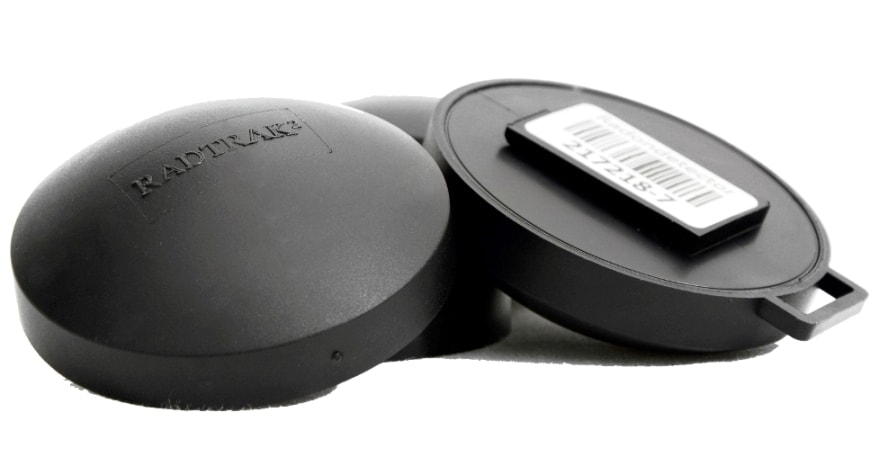
The Radtrak2 tests your home for radon over a period of 3 months or more, giving you an accurate reading of the levels that you and your family breathe in.
RELATED
Check out radon testers and mitigation solutions from Radon Environmental Corp. They have short term and long term monitoring, testing and building solutions for your home.
Once you have tested your home for radon, you are ready to take the next step of contacting a professional to install a radon mitigation system or who can advise you on the next steps that you should take.
Not sure which radon test to get? See your testing options here.
Mold And Poor Indoor Air Quality
Mold can be a major contaminant in your home and you don’t want to breathe it in – in any quantities. Mold can be frequently found in moisture heavy spaces like your kitchen, bathroom, basement but there are a lot of areas that mold can grow that you may not see like behind your walls.
Whenever we combine organic materials (wood, drywall, etc.) with water/moisture, and oxygen we have the potential of growing mold. This is why it is so crucial that we build quality homes to prevent hot/cold from the meeting, which creates condensation which causes mold to grow behind the walls.
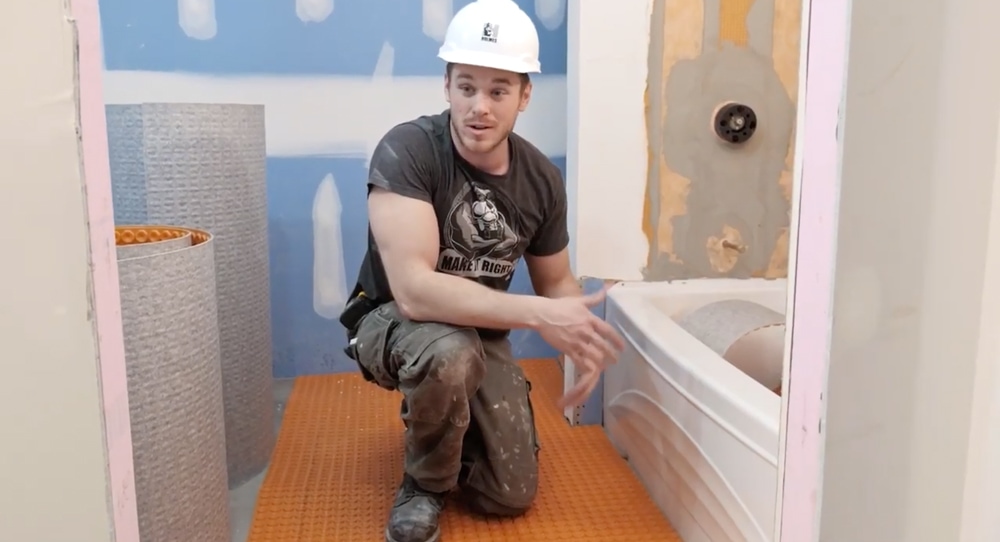
In areas like your bathrooms, it is important to use products like Kerdi/Kerdi Board and Ditra made by Schluter Systems to waterproof your bathroom properly.
By waterproofing your bathroom, you prevent water from getting beneath your tiles and going elsewhere in your home, attacking your building materials and creating mold and rot.
We know mold is not good for our health, especially for people with compromised immune systems, autoimmune diseases, and allergies, but it is also not good for our homes. If you have a water leak, it can lead to the rotting of integral structural components of your home which can compromise your home’s integrity.
Signs You Have Mold
You may be able to see visible mold around the house. If you don’t see it but suspect you may have it, here are some other signs:
- The indoor environment might seem damp or musty.
- There can be signs of moisture on walls, on the ceiling, in corners, and around windows,
- Your windows might have some condensation build-up.
Testing for Mold
If you only see a bit of mold but feel sick, you might have a bigger issue than you think. You will have to call a pro and don’t attempt your own clean-up. Mold remediation is a task that is better left in the hands of professionals. We work with Canada Restoration Services for mold and asbestos removal.
How Do You Prevent Mold Growth?
- Make sure your kitchen and bathroom ventilation is adequate
- Make your bathroom watertight
- Don’t turn off your HRV (Heat Recovering Ventilator) or ERV (Energy Recovery Ventilator)
- Invest in a dehumidifier
- Invest any leaks in your house
Here is a full article on testing for mold.
Build with Air Quality In Mind
From a building perspective, there is a lot we can do to prevent mold growth. This is why we always talk about building better. This includes thermally breaking your homes, waterproofing your bathrooms, using a subfloor system with a moisture barrier in your basement and so much more. We need to focus on building starting from the outside and working our way in.
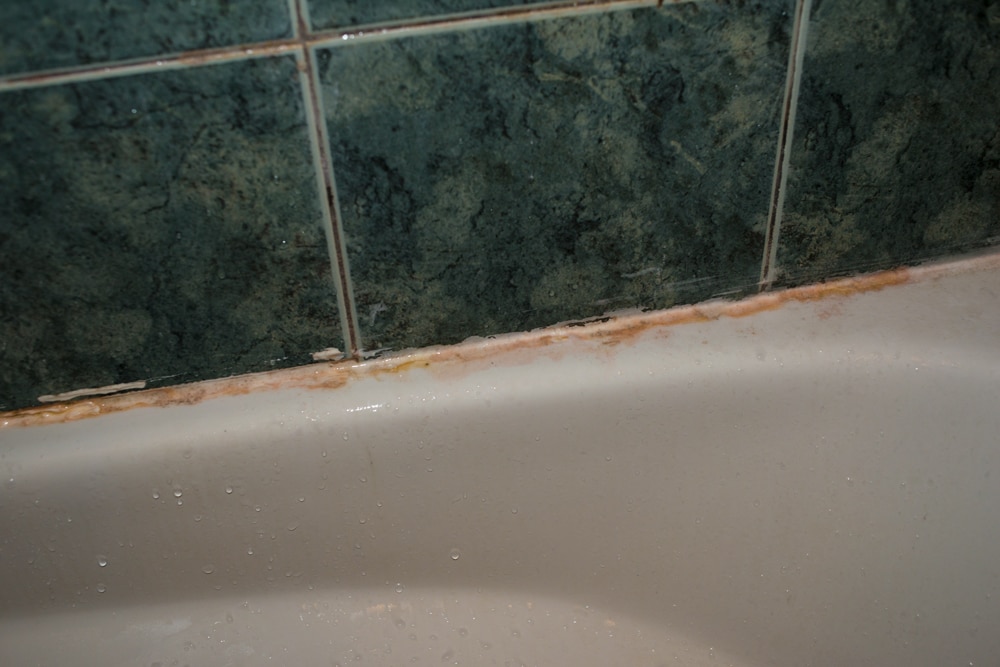
Every home will have some level of mold spores, but as long as it’s not a large amount (unlike in this image), you don’t need to worry.
Take Steps To Improve Your Indoor Air Quality
As a responsible homeowner, there are several things you need to think about to have good indoor air quality in your home:
- Testing your home for radon and mold to make sure you and your family are safe.
- Checking your furnace filter! Most furnace filters need to be changed every couple of months, if your filter is clogging up sooner than that you may want to consider having your ducts cleaned.
- When choosing paints, stains, oils, and finishes in your home, try and use a zero VOC or low VOC finish.
- Prioritize your renovations and build from the outside first.
Panasonic’s Air Purification Device
We installed a spot purification system on several jobs, and it’s a fantastic system everyone should look into. It’s called WhisperAir Repair (utilizes Panasonic’s patented nanoe™ X technology), and it purifies contaminated air in your home by inhibiting the growth of bacteria, viruses, allergens and mold. Here are some other benefits:
- Also breaks down hazardous substances, for a healthier home environment
- Quietly deodorizes and removes unwanted smells for a fresher, cleaner indoor environment
Proper Ventilation In Your Home
With all of these factors that contribute to poor indoor air quality, proper ventilation and air circulation in your home are key.
Heat Recovery Ventilator (HRV)
Having a Heat Recover Ventilator (HRV) installed in your home can help you in so many different ways that you may not be aware of. An HRV exchanges stale air in your home with fresh treated air from outside of your home.
RELATED
Get to know your HVAC system
If you have high levels of VOCs – which can be found in carpets, furniture, paints, aerosol cans, etc.), formaldehyde, and radon, an HRV will actually help you bring cleaner air into your home. You may also want to consider using an air purifier in your home to help clean the air that you are breathing in.
Having good indoor air quality in your home is integral to keeping you and your family safe and healthy. We spend approximately 90% of our time indoors, so it makes sense that this should be at the top of your priorities list.
Here is a full article on kitchen and bathroom ventilation.
WANT MORE ADVICE?
Sources of Indoor Air Pollution
Check out the latest episode of Holmes @ Homes where I answer your questions.
